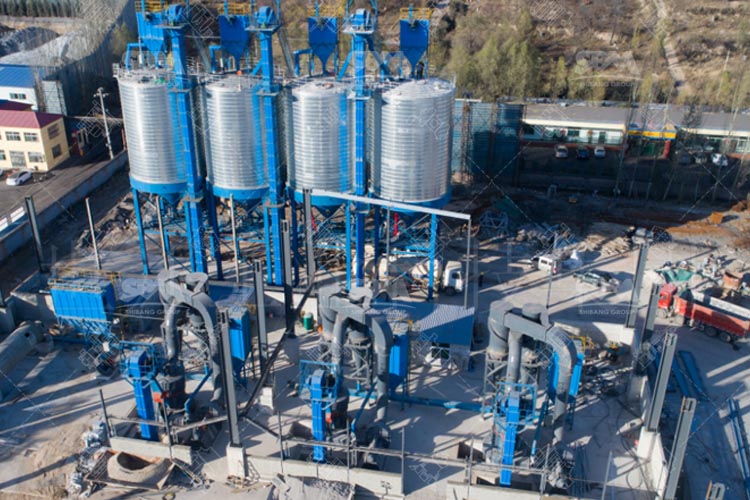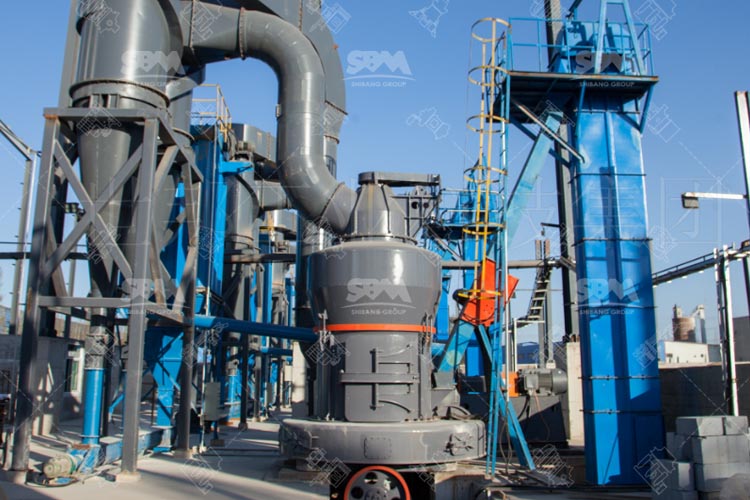Limestone Powder For Desulfurization in Power Plants
Power plants that burn fossil fuels, such as coal or oil, are significant contributors to air pollution, emitting sulfur dioxide (SO2) and other harmful pollutants. To mitigate the environmental impact of these emissions, power plants employ desulfurization processes to remove sulfur dioxide from flue gases. One widely adopted method is limestone power plant desulfurization, which utilizes limestone as a sorbent to capture and neutralize sulfur dioxide. In this article, we will delve into the process of limestone power plant desulfurization and its role in promoting clean air and sustainable energy production.

What is the desulfurization process in power plants?
Limestone power plant desulfurization, also known as flue gas desulfurization (FGD), involves the following steps:
Flue Gas Scrubbing: The flue gases generated during the combustion of fossil fuels in power plants are directed through a flue gas desulfurization system. In this system, the flue gases come into contact with a slurry or spray of finely ground limestone (calcium carbonate).
Sulfur Dioxide Absorption: The limestone in the slurry reacts with sulfur dioxide present in the flue gases, resulting in the formation of calcium sulfite (CaSO3) or calcium sulfate (CaSO4), depending on the process employed.
Oxidation and Reaction: In some FGD systems, the calcium sulfite is oxidized to calcium sulfate using an oxidizing agent, such as air or oxygen. This calcium sulfate can be further processed and used in various applications, including gypsum production.
Byproduct Disposal or Utilization: The byproducts generated during the limestone power plant desulfurization process, such as calcium sulfite/sulfate sludge or gypsum, need to be properly managed and disposed of, or potentially utilized in other industries.
Advantages of Limestone Power Plant Desulfurization
Effective SO2 Removal: Limestone power plant desulfurization is highly effective in removing sulfur dioxide from flue gases, reducing SO2 emissions and minimizing their impact on air quality and public health.
Abundance and Cost-effectiveness: Limestone, the primary sorbent used in the process, is abundant and relatively low-cost, making limestone power plant desulfurization a cost-effective solution compared to other desulfurization methods.
Simultaneous Particle Capture: In addition to sulfur dioxide removal, limestone power plant desulfurization can also capture and remove other particulate matter, such as fly ash and fine particles, improving overall air quality.
Sustainable Approach: By reducing sulfur dioxide emissions, limestone power plant desulfurization contributes to sustainable energy production by aligning power plants with environmental regulations and reducing their ecological footprint.
Role of Grinding Mills in Desulfurization
Grinding mills play a critical role in the limestone desulfurization process in power plants. They are designed to finely grind limestone into the desired particle size distribution, ensuring optimal reactivity and efficiency. Commonly used grinding machines include ultrafine vertical mill and Raymond mill . Here are some key contributions of grinding mills:

Particle Size Control: Grinding mills allow precise control over the particle size distribution of the ground limestone. This control is crucial as it influences the surface area available for the chemical reactions between limestone and sulfur dioxide. The finer the particle size, the greater the contact area, resulting in enhanced desulfurization efficiency.
Increased Reactivity: Grinding limestone to a fine powder increases its reactivity by exposing a larger surface area to the flue gases. This promotes faster and more complete reactions between limestone and sulfur dioxide, leading to improved desulfurization performance.
System Integration: Grinding mills are designed to seamlessly integrate into the overall limestone desulfurization system in power plants. They can be incorporated into wet or dry grinding circuits, depending on the specific process requirements and plant configuration.
Energy Efficiency: Modern grinding mills are engineered to operate with high energy efficiency. They utilize advanced technologies such as optimized grinding media, efficient motor systems, and intelligent control mechanisms to minimize energy consumption while maximizing limestone grinding performance.
Grinding mills are indispensable in the limestone desulfurization process for power plants. They enable efficient and precise grinding of limestone, ensuring the desired particle size distribution for optimal desulfurization performance. By incorporating grinding mills into the limestone desulfurization system, power plants can effectively reduce sulfur dioxide emissions and contribute to cleaner air and sustainable energy production. The continuous advancements in grinding mill technologies further enhance their efficiency and enable power plants to achieve cleaner and more environmentally friendly operations.